Native plant gardeners are often plagued by damage from landscape companies with staff that know only how to “cut lawns and string trim anything that looks like a weed”. As a result, we often hear sad stories about native gardens being cut to the ground, mowed or otherwise decimated by such companies hired to cut and trim lawns. Or, people are often cited by their HOA as having non-compliant “weeds”.
“Cues to care” are signals to HOAs and others that the landscape is intentional and being cared for. They are those things you can do that says to someone “STOP, this is a managed garden!” Without cues to care, a phrase coined by landscape architect Joan Iverson Nassauer to describe visual hints of human stewardship, native gardens can sometimes resemble abandoned lots or roadside ditches.
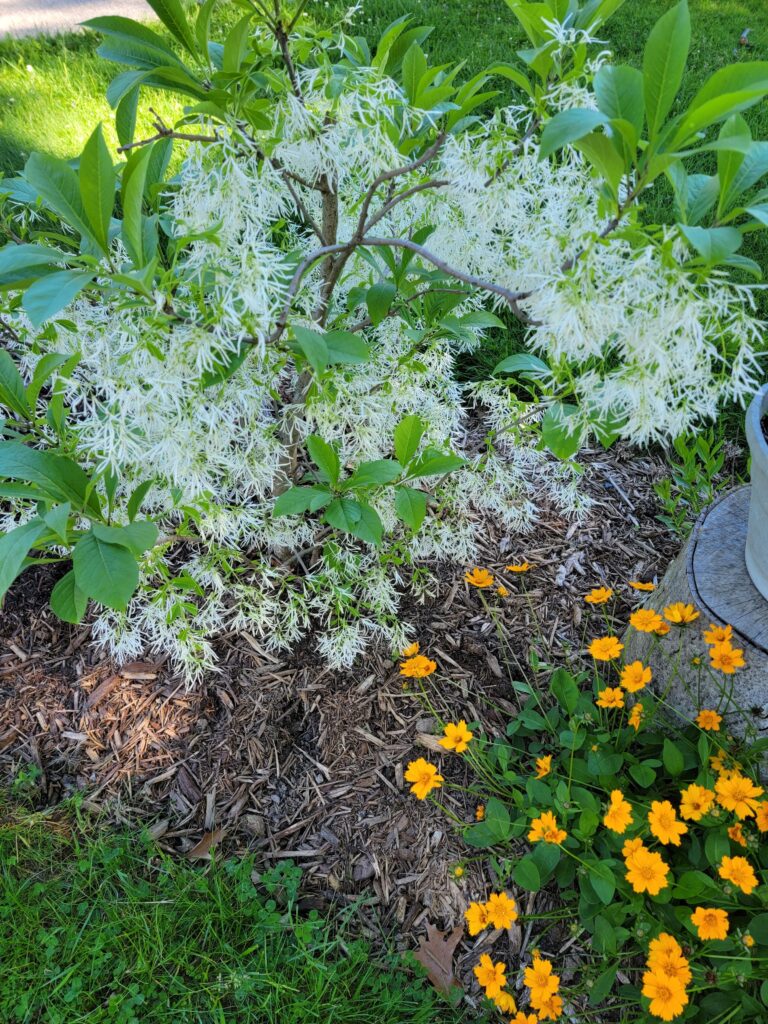
A White Fringe tree and Coreopsis in a mulched front yard bed create a welcoming native garden view.
(Photo: Sue Williams)
FRONT YARDS/ROADSIDE GARDENS:
As the old saying goes, “Business in front, party in the back.” Native plants gardens with colorful fruit or flowers can provide priceless PR for wildlife gardens. A neat appearance in the front yard can keep judgmental neighbors and HOAs at bay.
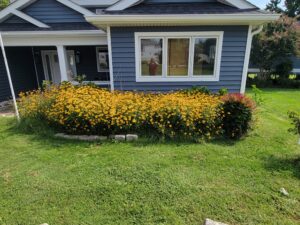
Examples include:
● White Fringe trees and Gray dogwoods, which bloom at different times and are ‘showy’ in the spring.
● American Beautyberry, which gets gorgeous purple berries in the fall.
● Virginia Sweetspire, which can live in large pots.
● Violets, which will take over as green mulch, instead of laying down large patches of mulch.
● Interspersed flowering plants like Coreopsis, Butterfly Weed and Rudbeckia, which provide gardens with summer color.
● Carex albicans, which looks like grass but is prettier and needs minor amounts of maintenance.
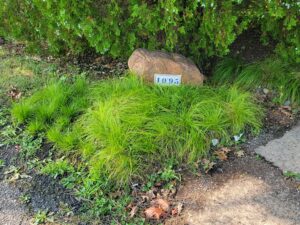
(Photo: Sue Williams)
SIGNS:They show legitimacy and intention.
Gardens can be certified as a conservation habitat through a number of different groups with varying purposes (e.g., for plants, birds, or pollinators). Most require an application and a modest fee (most of which covers the cost of the sign.)


Certification signs lend an air of credibility and purpose. (Photos: Sue Williams)
Some examples include:
● Baywise;
● National Wildlife Federation;
● Pollinator Pathway; and
● Wild Ones.
PLANTING IN DRIFTS: They make more sense to your human AND wild neighbors.
Like a kid in a candy store, many gardeners treat a trip to a nursery or native plant sale as an opportunity to fill their cars with one of each plant that they “must have” only to get home and wonder where they’ll put
everything. (Most gardeners are guilty of this.) Avoid the “collector mentality.” It’s confusing, not only for human visitors but also for the many native bees who spend a lot of time and energy gathering pollen only from certain species.
To create a garden that’s functional for both human and wild neighbors, start with a dozen plants with different bloom times. Aim for three that bloom in early spring, three in late spring/early summer, three in mid-summer, and three in fall.
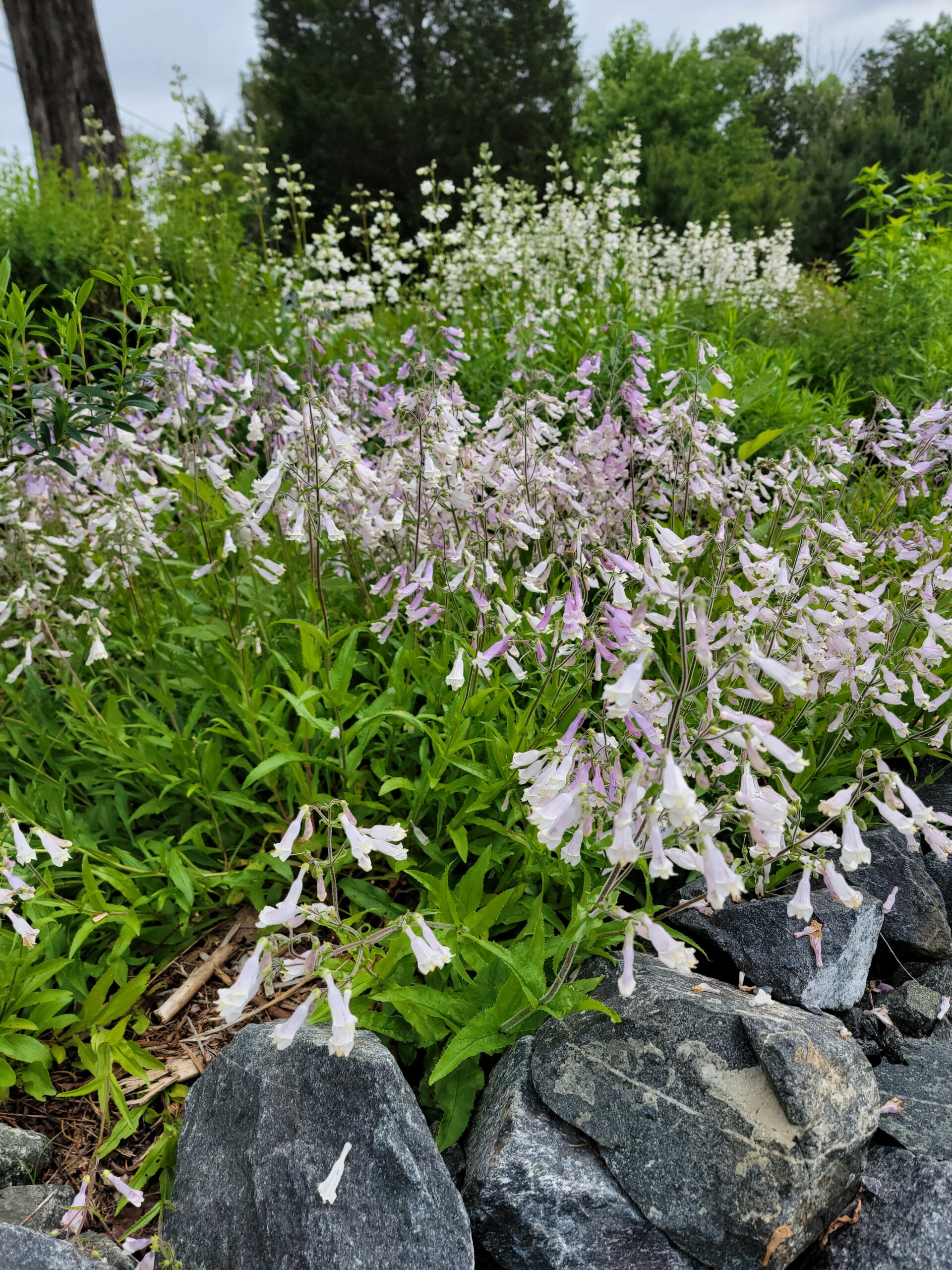
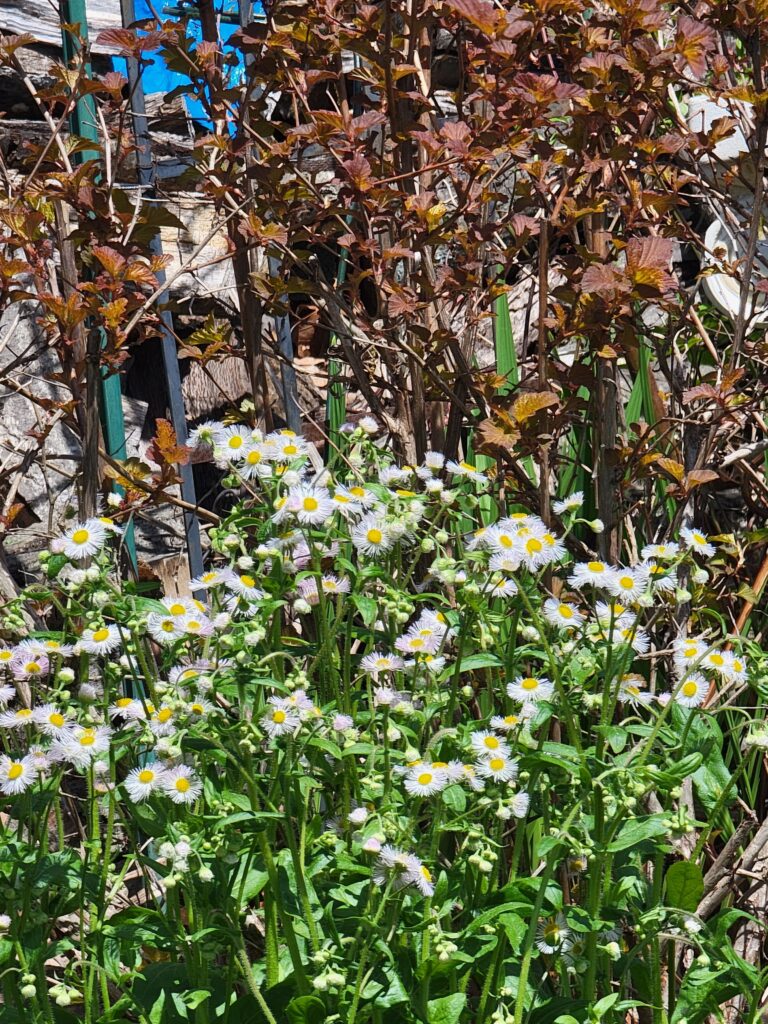
(Photos: Sue Williams)
While it can be expensive to buy multiples of a single plant at retail prices, there are alternative ways to get more plants.
Many native wildflowers are easy to grow from seed, and seed saving along with winter sowing is an inexpensive way to gather more plants from those you already have.
Consider allowing as many plants as possible to spread naturally in the garden; plants can always be divided and transplanted or given away.
In addition, an increasing number of companies offer small plants or plugs that can be much more affordable. Locally, Butterfly Alley in Hollywood, MD sells well-rooted plugs in the spring and fall.
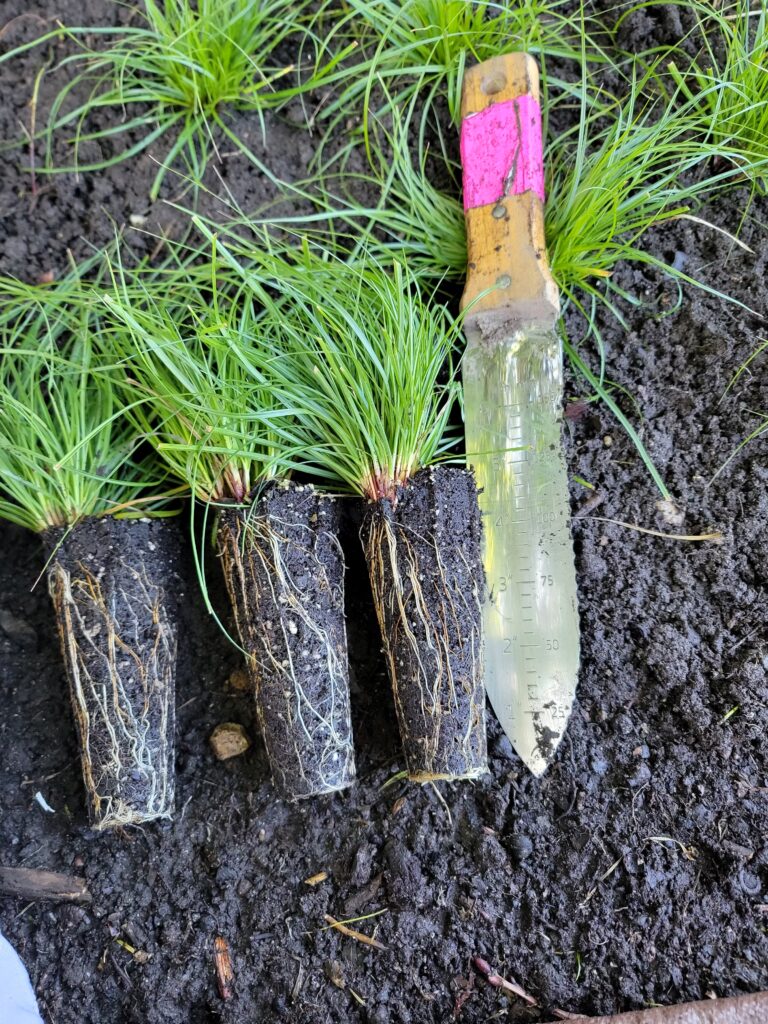
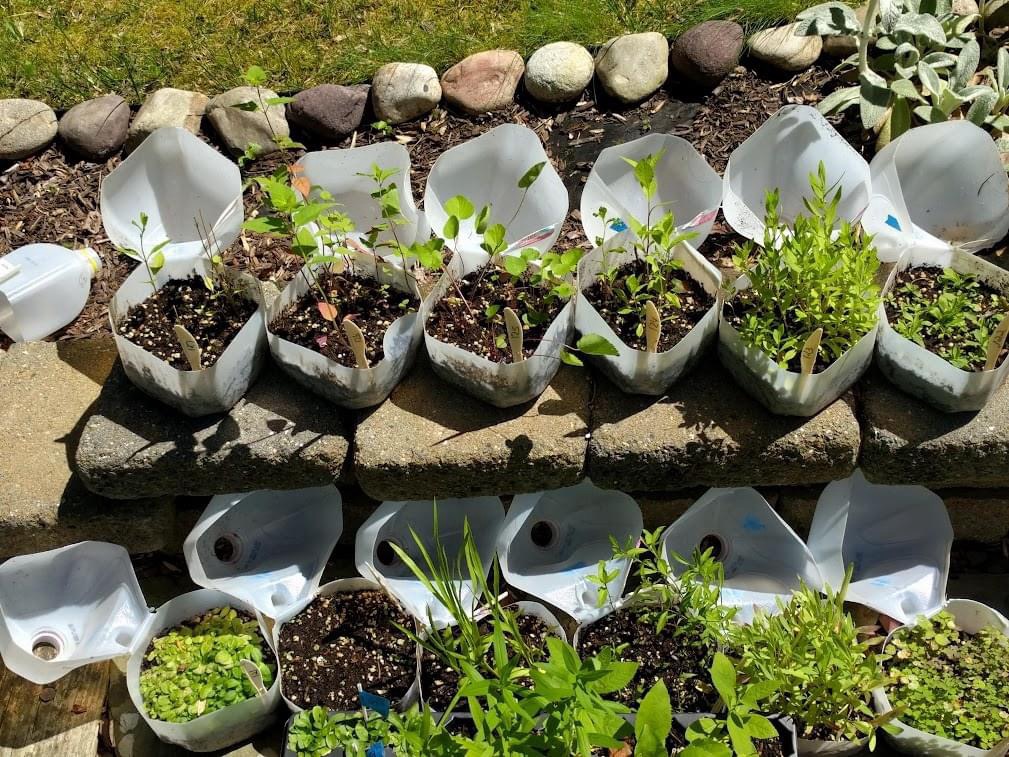
Plugs are small, well-rooted plants that are less expensive than quarts or gallons. Winter sowing of gathered seeds is an inexpensive way to get more plants. (Photos: Marlene Smith.)
BORDERS: They separate mowed areas from garden areas.
Borders tell people that one section is different from another. They give the idea that an area that might appear “weedy” is actually intentional. They clearly indicate to landscapers, neighbors and spouses, “Don’t mow (or
trim, or walk, or spray) here!”
Borders can be created as easily as edging the grass at the transition to a bed. Or they can be created with common objects like pavers, bricks, stones and logs. Often, they are made with whatever is available! Pay
attention to neighbors who are changing their landscape. That brick or slate sidewalk that is being changed out could turn into free edging materials that create a quick border around a native garden bed.


The Carex in this picture could be mistaken for grass and trimmed. Rocks and a small sign indicate that it was purposely planted. (Photos: Sue Williams)
SCULPTURES FROM NATURAL MATERIALS: They add visual interest and show intention.
Natural materials used as sculptural elements show that the garden is special and not an abandoned space. Unique driftwood pieces, stones, and logs add visual interest too.
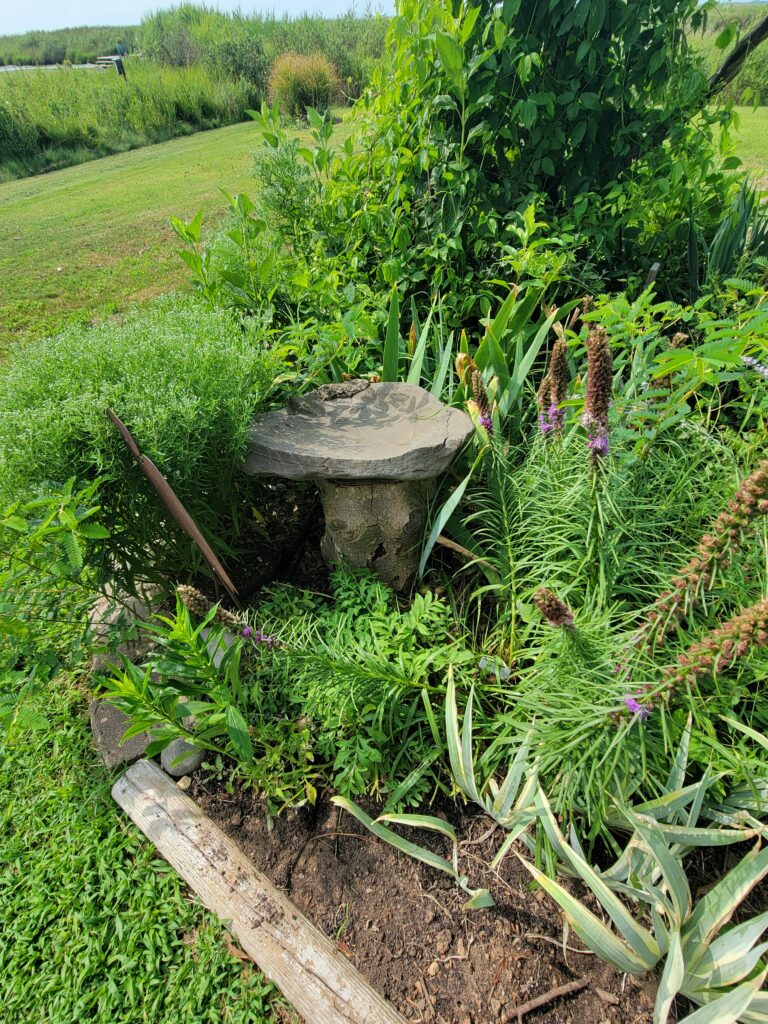
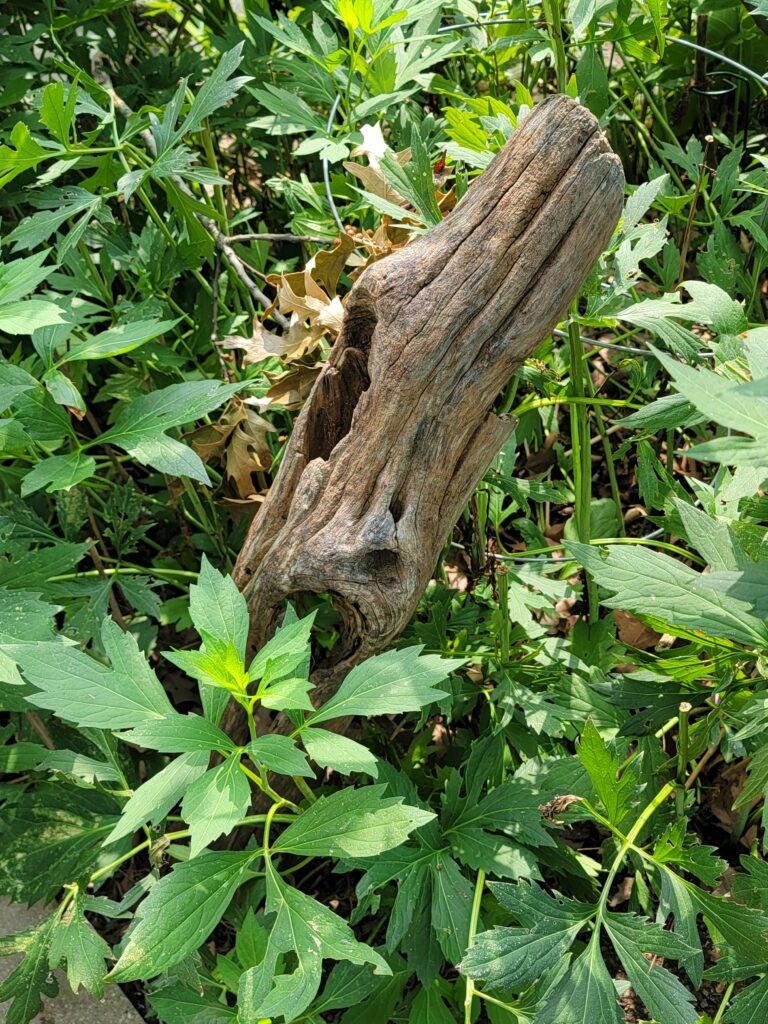
Natural elements provide focal points in a native garden. (Photos: Sue Williams)
Cues to Care are those things you can do to make sure that friends, family, landscape crews and others know that the area is INTENTIONAL, even though it may not look like the traditional concept of a “garden”.
Happy Native Gardening
Sue Williams, Author
Robin Madel, Editor
For more information:
